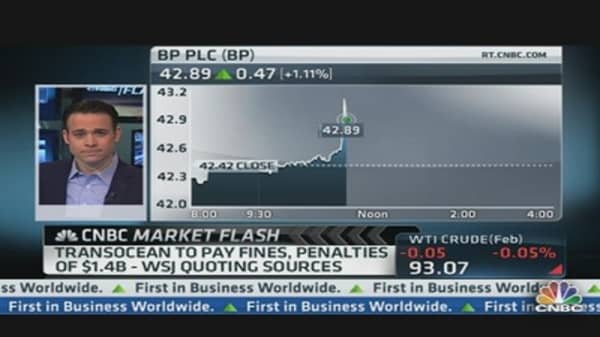The following post is a Guest Blog by CNBC Contributor Brian Stutland.
The latest chapter of the Deepwater Horizon saga has been written, and it could send shares of Transocean, the owner of the drilling rig that spawned the Gulf of Mexico spill, higher.
The U.S. Department of Justice reported on Thursday that Transocean agreed to plead guilty to violating the Clean Water Act. The company also agreed to pay $400 million in criminal penalties and $1 billion in civil penalties. (Read More: Transocean to Pay $1.4 Billion Over Gulf Oil Spill.)
Transocean's stock jumped over 6 percent on the news, primarily on relief that the penalty amount was not higher, and that DOJ will not pursue further prosecution of the company.
The stock also saw heavy bullish option trading. With the stock at $48.97, one trader bought 884 January 50-strike calls for $0.65 each. This trade will profit if RIG is above $50.65, or 3.24 percent higher, at January expiration in 14 days. (Read More: Option's Explained.)
Now that the market knows what Transocean's liabilities are in the Deepwater Horizon disaster, the stock could move higher.












